AWS Solutions Architect Associate Certification
Services Database
TimeStream
In this lesson, we explore AWS Timestream—a fast, scalable, and serverless time series database service—and explain why managing time series data is essential for modern IoT and operational applications.
Why Use a Time Series Database?
Time series databases are crucial when dealing with data from IoT devices and monitoring cameras. Traditional databases often struggle with these workloads because of:
High Volume and Velocity
IoT devices and surveillance cameras produce massive streams of real-time data. Conventional databases can suffer from performance bottlenecks and even data loss when processing such high-speed, high-volume streams.
Variable Data Structure
Data generated by sensors and monitoring systems can change significantly over time. Traditional databases rely on a fixed schema, making it challenging to adjust to evolving data formats.Data Lifecycle Management
The value of time series data decreases with age. Without efficient data retention and deletion policies, traditional databases struggle with archiving or purging outdated information.
Note
AWS Timestream was designed to overcome these challenges by offering a flexible, serverless solution that scales dynamically with your data needs.
How AWS Timestream Addresses These Challenges
AWS Timestream offers a serverless architecture that decouples data ingestion, storage, and querying, allowing each component to scale independently. Here are some of its key features:
Dynamic Schema Creation: Unlike fixed-schema databases, Timestream automatically adapts its table schema based on the incoming time series data, allowing for incremental schema evolution.
Efficient Data Partitioning: Data is partitioned by time and various attributes using purpose-built indexes, which accelerates query performance.
Automated Data Lifecycle Management: Timestream uses an in-memory store for recent data and a magnetic store for historical data. Configurable rules automatically transition data between these tiers as it ages.
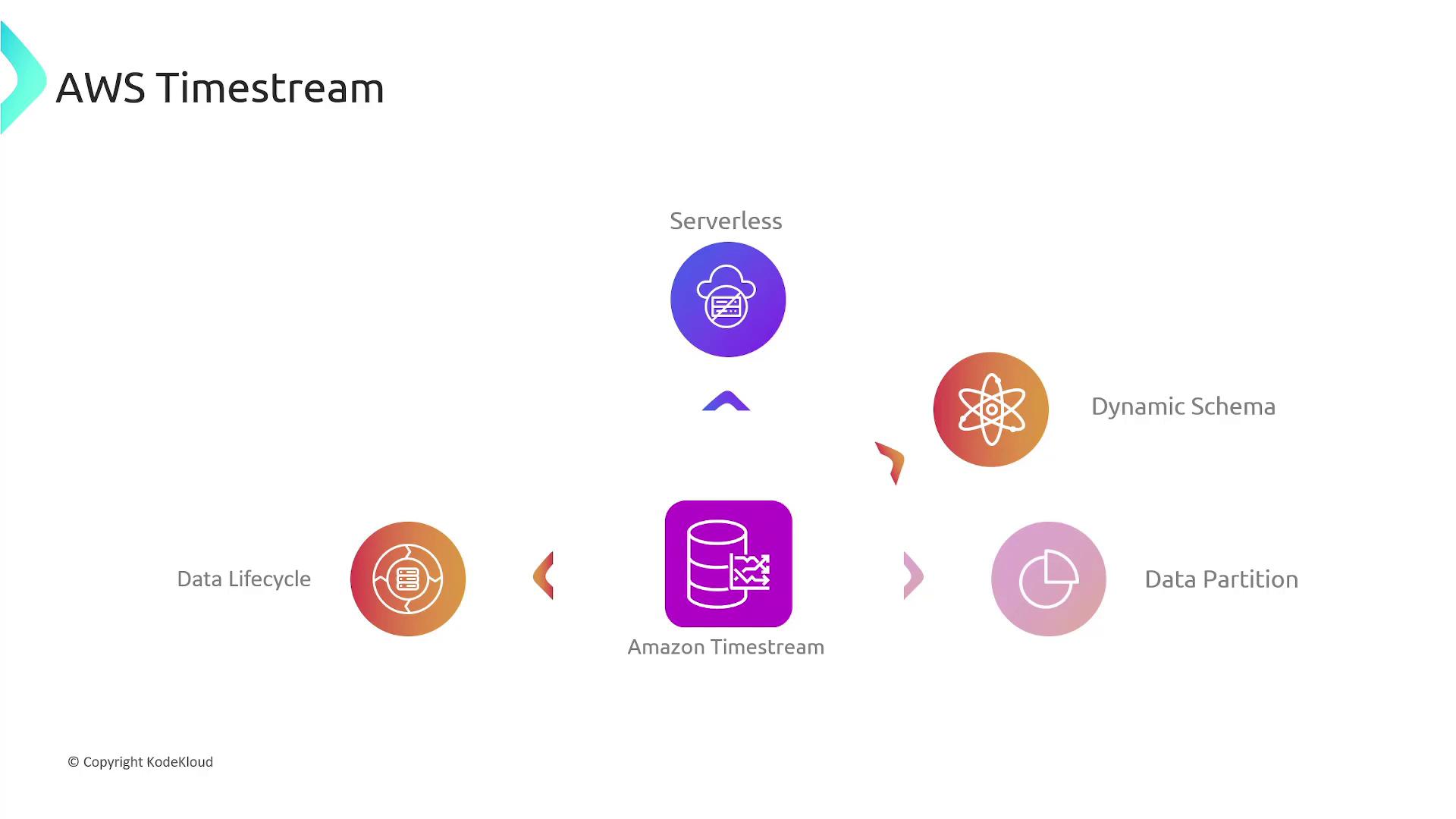
Key Features of AWS Timestream
Serverless: No need to manage infrastructure or provision capacity.
Storage Tiering: Separates recent data in memory from older data in a magnetic store with seamless movement between the two.
Built-in Time Series Analytics: Supports advanced aggregates, window functions, and complex data types.
Custom Query Engine: Enables querying across storage tiers using a single SQL statement.
Data Protection: Integrates with AWS Backup to safeguard your time series data.
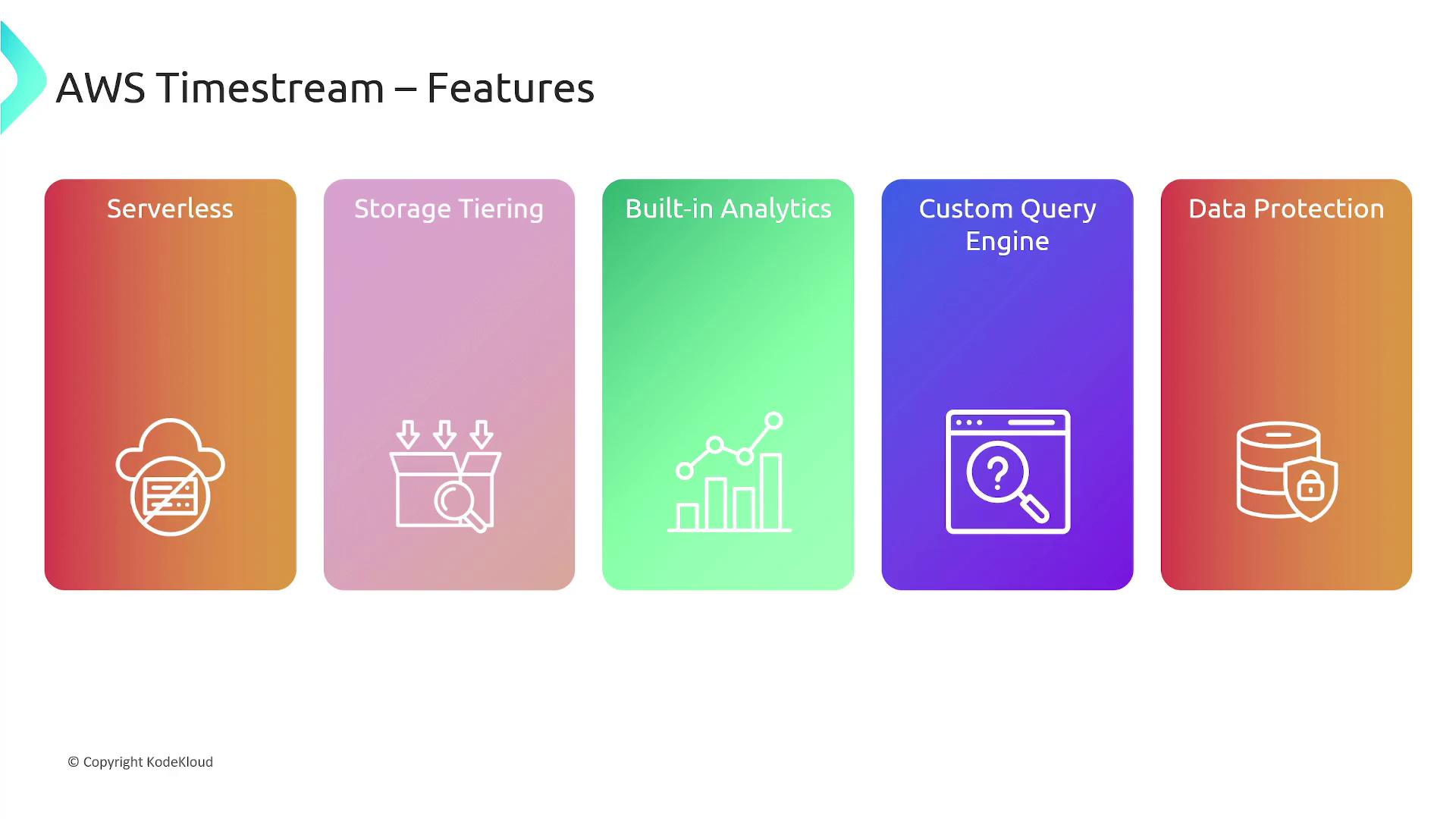
Integrations and Use Cases
Data can be sent to AWS Timestream using several AWS services, such as AWS IoT Core, Amazon Kinesis, and Amazon Managed Streaming for Apache Kafka (MSK). For visual analysis, you can use Amazon QuickSight or Grafana, while integration with Amazon SageMaker enables advanced machine learning scenarios.
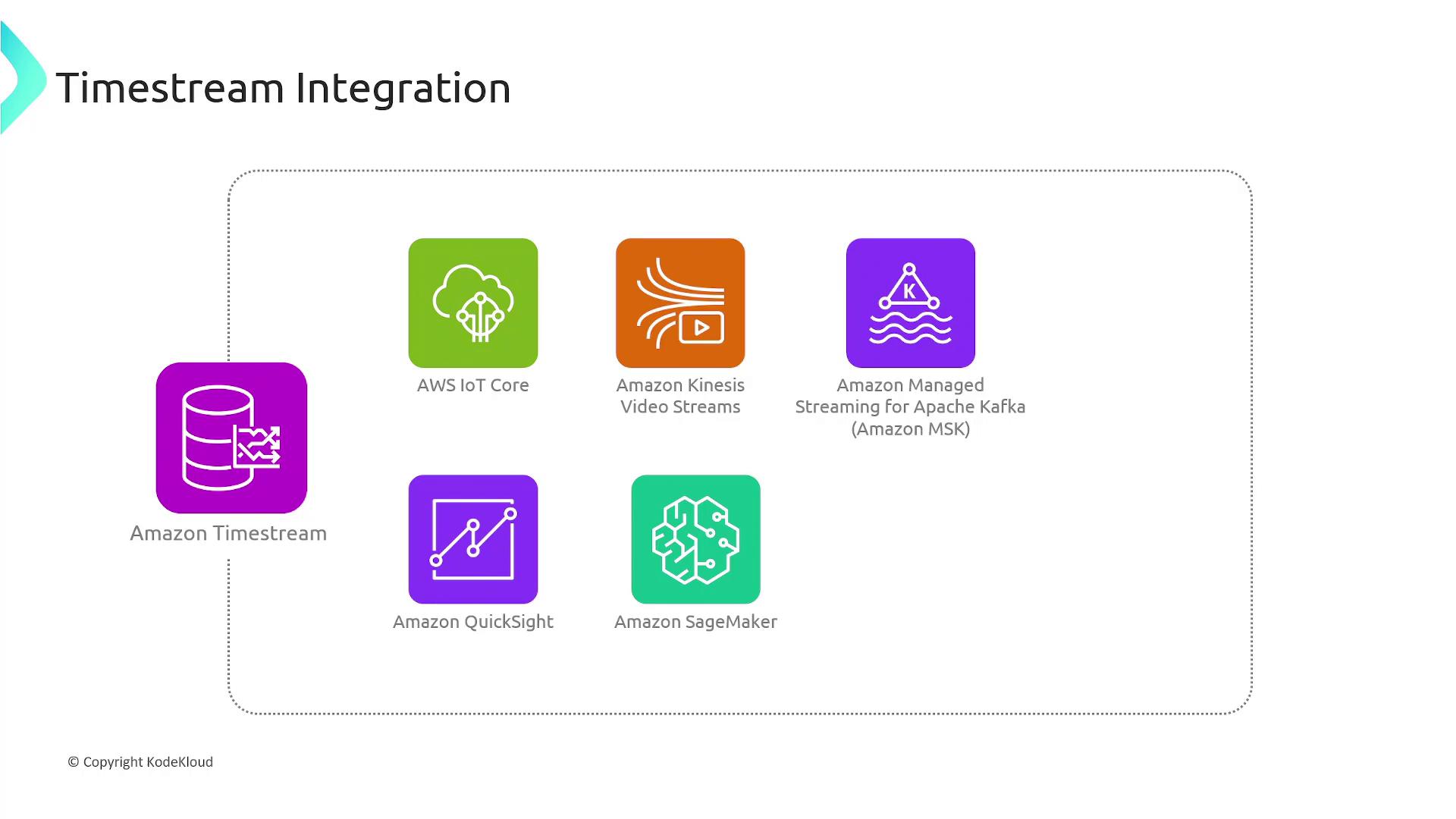
Common Use Cases
| Use Case | Description |
|---|---|
| IoT Applications | Centralizes data from IoT devices like cameras for real-time monitoring and analysis. |
| DevOps | Collects and analyzes operational metrics to monitor system health and performance. |
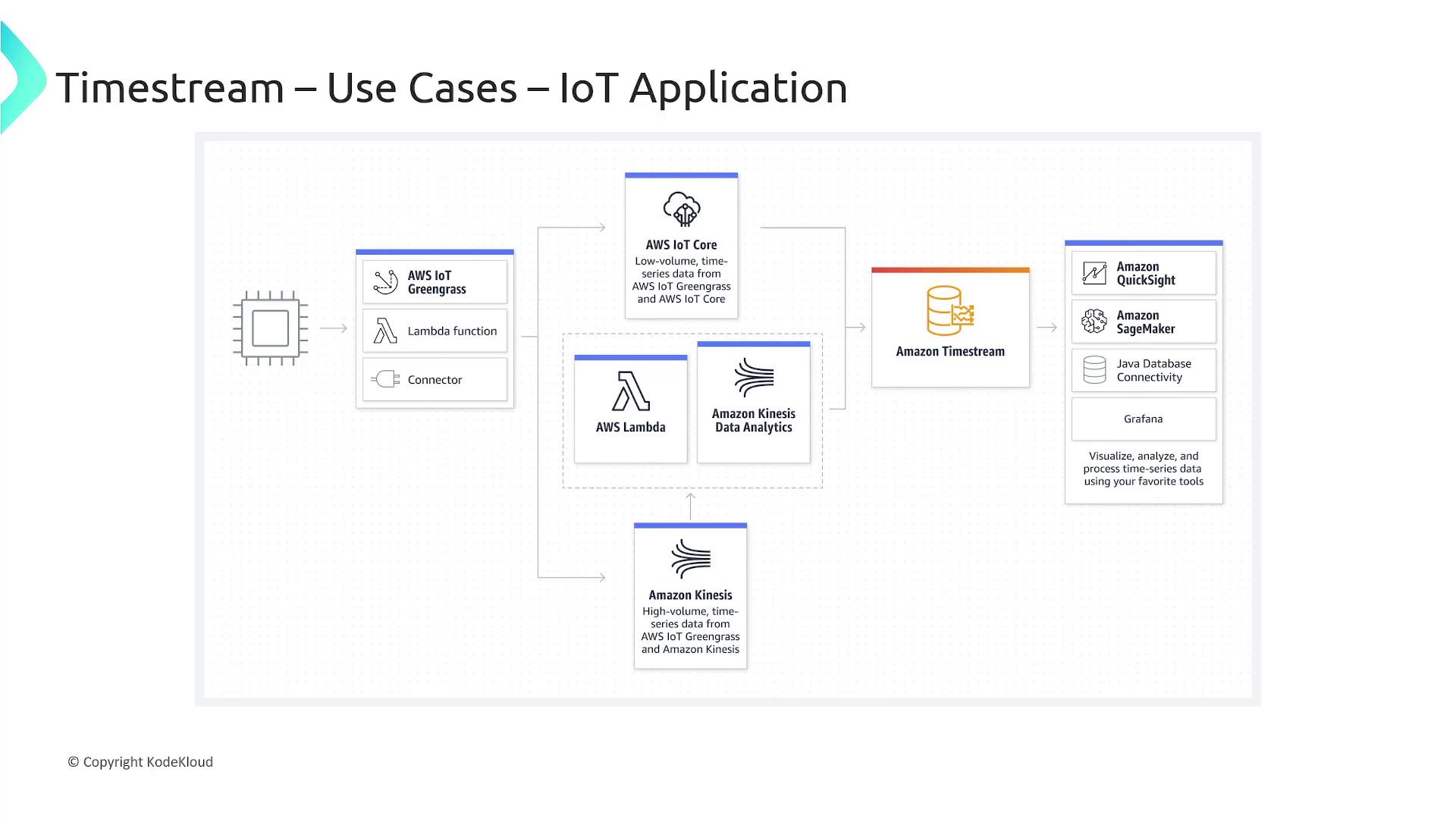
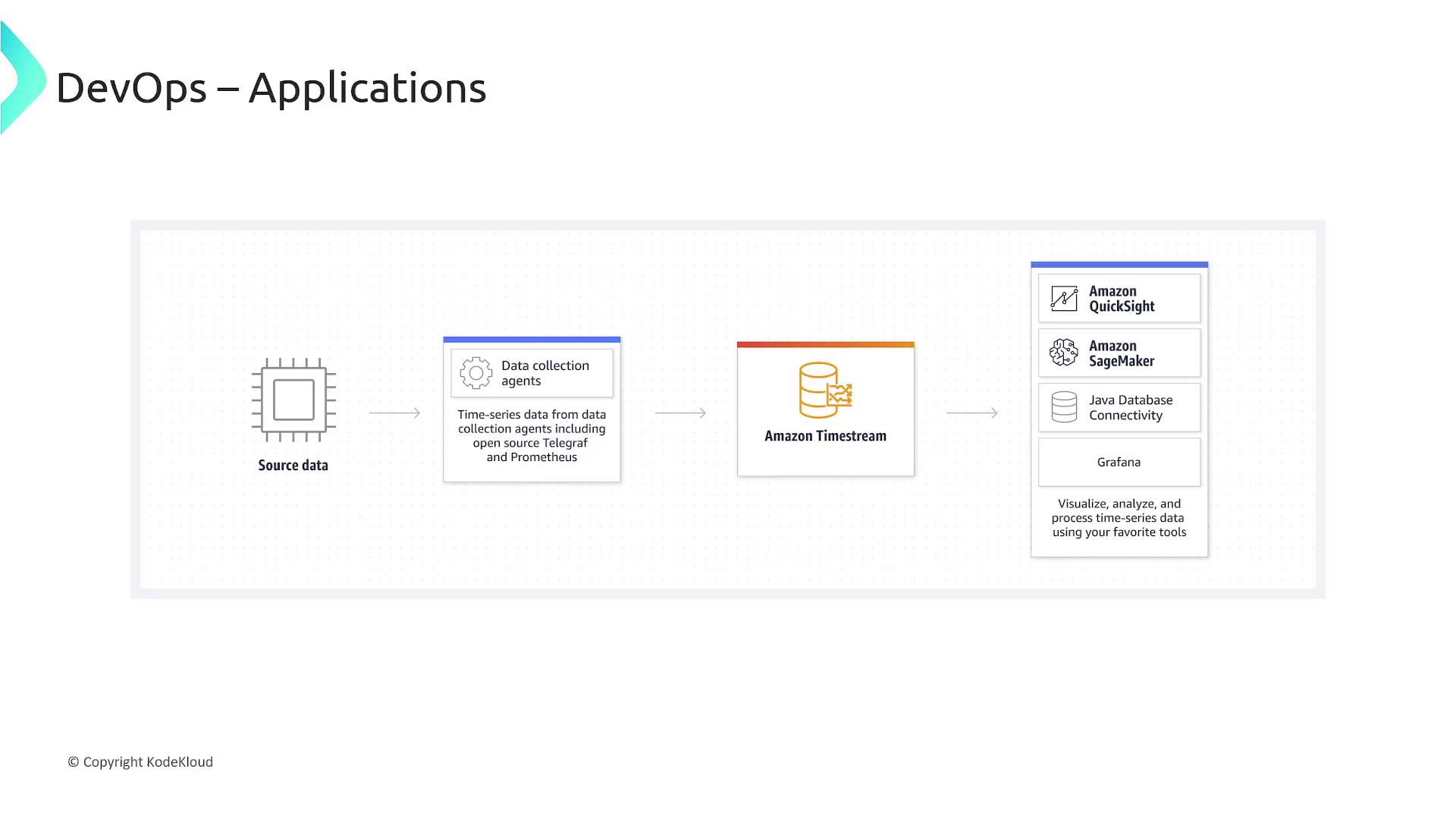
Summary
AWS Timestream is engineered to handle the scale and performance demands of IoT and operational applications. Its serverless, fully managed service automatically scales to match workload demands, while its flexible data model accommodates evolving data formats without requiring predefined schemas. With seamless integration into popular BI and ML tools, AWS Timestream makes it easy to visualize and analyze massive amounts of time series data.
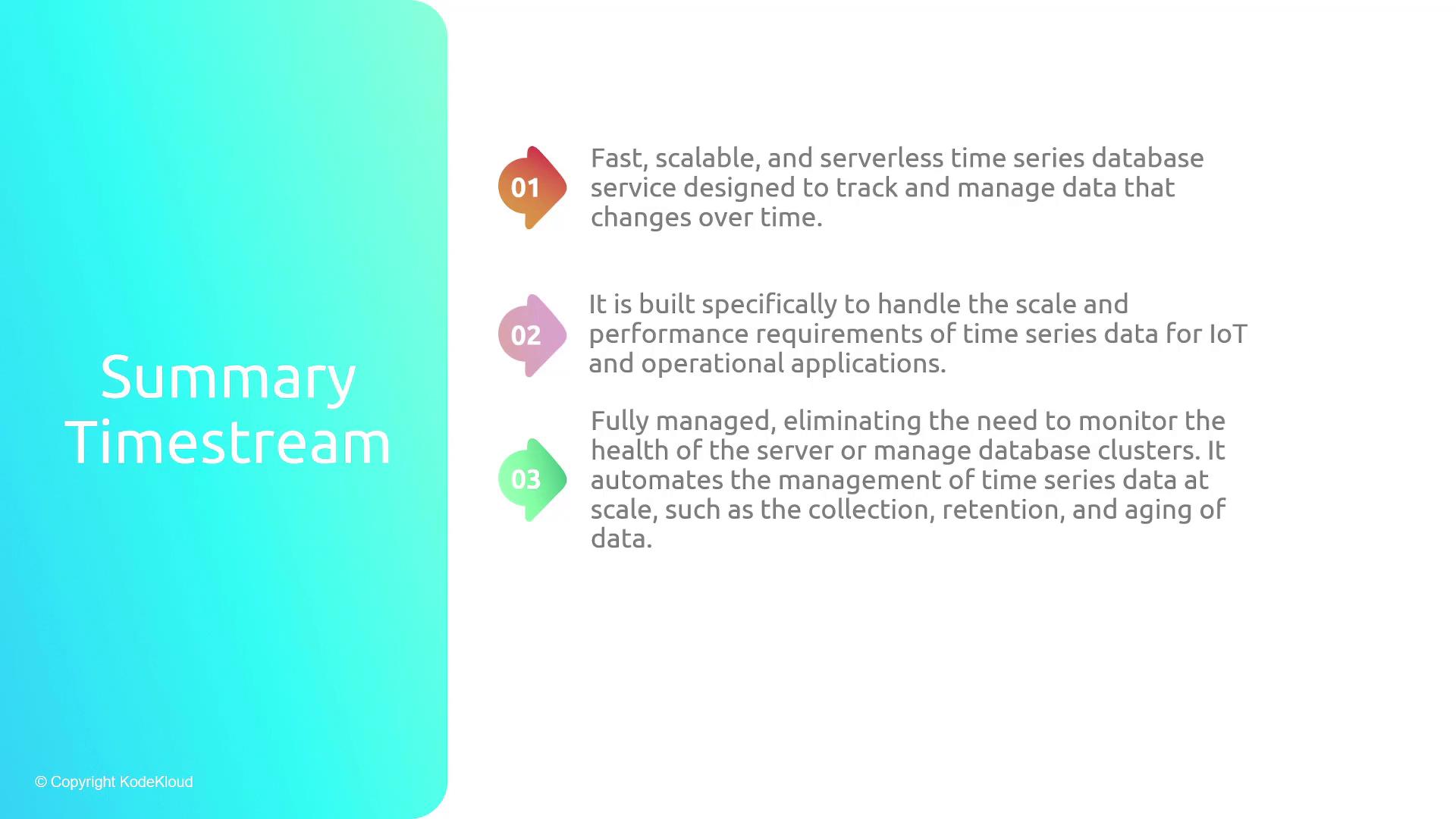
Watch Video
Watch video content